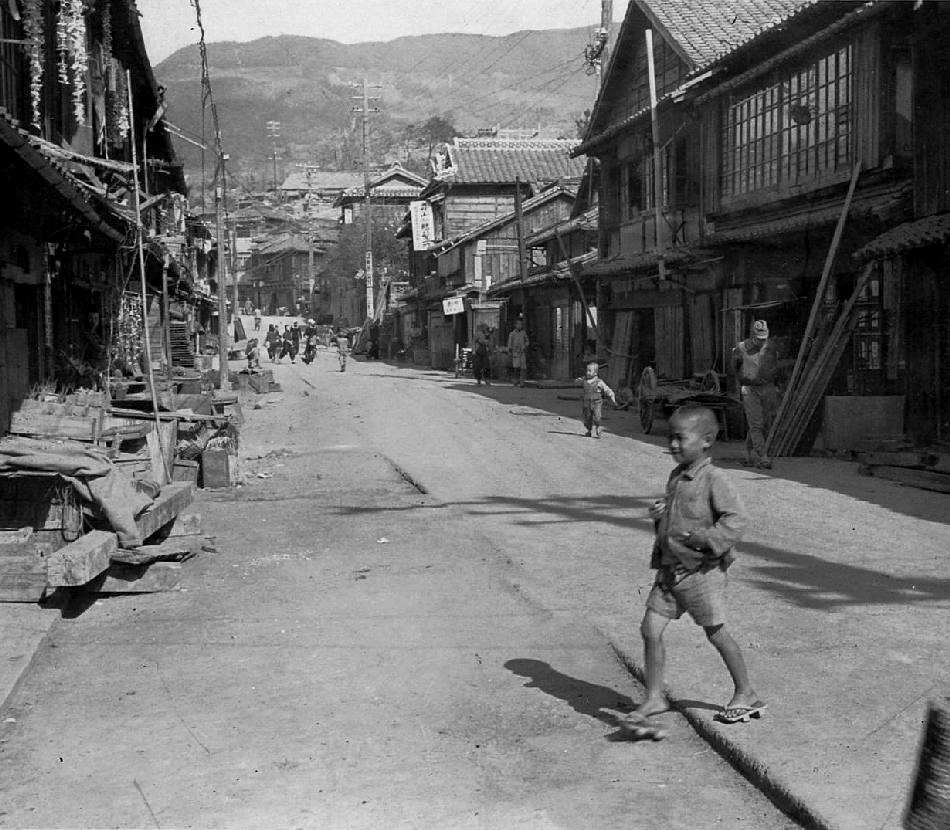
World War II Aftermath: Cold War Politics--The Japanese Reverse Course (1948-50)

Figure 1.-- Sasebo was a port built specifically for the Imperial Navy (1902). It was a major naval port throughout the War. The Americans heavily bombed Sasebo, destroying about half the city (June 29, 1945). Here we see the city after the War, notice the construction in progress.
|
|
The nature of the American occupation of Japan changed dramatically after aeries of dranatic social and political reforms (1948). The increasing awarneness of the Soviet threat brough about the realization in America that a Cold War was underway. This was something the Soviets began even before the War nded, but the American public did not become aware of until later with Soviet actions in Eastern Europe and Berlin (1948). This coincided with an conomic crisis in Japan. Japan could not feed itself, it had to import food. Before the War, food imports were paid for by industrial exports. Japan's cities and industries, however were in ashes and thus Japan did not have the ability to financ needed food imports. This fed into American concerns about the spread of Communism. The Democratic political reforms and the constitutional guarantees of a free press and free expression meant that the Communit Prty could organize and compete in elections. The SCAP thus shifted its emphasis from social reform to economic reform.
This period of the occupation is sometimes referred to as the "reverse course." The economic rehabilitation of Japan became the primary goal of the occupation SCAP was concerned that a poor Japanese economy would increase the appeal of the Communists. And with Communist successes in the Civil War, the future of Japan took on increasing importance.
SCAP initiated a range of policies to promote economic recovery. SCAP intridyced a tax rform and attempted to control inflaion. A mjor problem that Japan faced was that it needed raw materials, but wthout finished goods to export, it had no way of importing needed raw materials. The economic problems wre not relly resolved until the Korean War (1950). The Korean emergency created all kinds of jobs and business opportunities as the United States and its allies rushed mikitary forces to Japan and Korea. Japan became the principal supply depot for U.N forces attempting to save South Korea. The United States military commitment to Korea had amajor impact on Japanese strategic thought. The commitment to Korea meant that the United States would also protect Japan. This assured the Japanese leadership that the country's security was not threatened by de-militarization. And the Korean economic boom helped generate the rebuiling of Japan and the esuing Japanese Economic Miracle.
HBC

Navigate the Boys' Historical Clothing Web Site:
[Return to Main Japanese World War II occupation page]
[Return to Main Japanese World War II aftermath page]
[Biographies]
[Campaigns]
[Children]
[Countries]
[Deciding factors]
[Diplomacy]
[Geo-political crisis]
[Economics]
[Home front]
[Intelligence]
[Resistance]
[Race]
[Refugees]
[Technology]
[Bibliographies]
[Contributions]
[FAQs]
[Images]
[Links]
[Registration]
[Tools]
[Return to Main World War II page]
[Return to Main war essay page]
Created: 6:49 AM 9/7/2012
Last updated: 6:49 AM 9/7/2012



